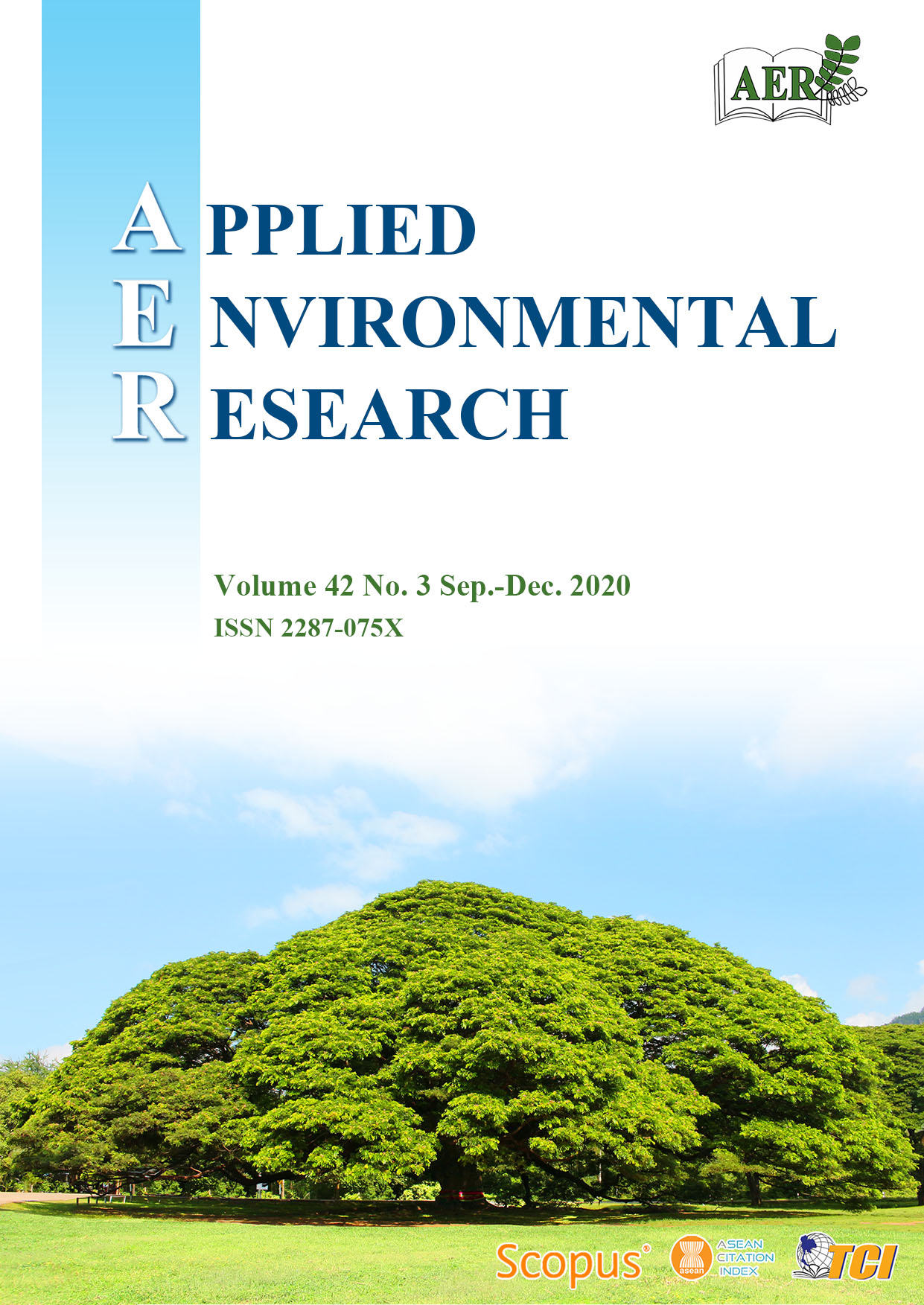Effect of Mixture Ratio of Food Waste and Vetiver Grass on Biogas Production
Main Article Content
Abstract
The objectives of this research were to study the optimum percentage ratios of food waste and vetiver grass (Vetiveria zizaniodes (L.) Nash) for biogas production and process stability in anaerobic digestion system. The nine mixture ratios of food waste (FM) and vetiver grass (VG) were 100:0, 80:20, 75:25, 66.67:33.33, 50:50, 33.33:66.67, 25:75, 20:80 and 0:100. The biogas production was subjected to anaerobic batch with working volume of 1.8 L and had digestion time 60 d at 35 ± 2 °C. High specific methane yield of 0.30 L g-1 VS removed was obtained from the fermentation at ratio of FW:VG at 80:20 with C/N ratio of 28.20. The specific methane yield of the single digestion of food waste (100:0) and single digestion of vetiver grass (0:100) were only 0.18 and 0.11 L g-1 VS removed, respectively. It was found that the cumulative methane production of FW: VG ratio of 80:20 was increased 34.89% and 96.93% compared to single substrate of food waste and vetiver grass, respectively. The results also showed the highest COD, VS and TS removal with a percentage ratio of FW: VG at 80:20, while the single vetiver grass digestion was the lowest COD, VS and TS removal. VFAs/Total alkalinity ratio of all ratio of food waste to vetiver at digestion time 40 d remained in 0.0895±0.0007 to 0.1944±0.0027 were steadied for this digester. It can be concluded that co-digestion of food waste and vetiver improve the biogas yield and degradation efficiency.
Article Details

This work is licensed under a Creative Commons Attribution-NonCommercial 4.0 International License.
Published articles are under the copyright of the Applied Environmental Research effective when the article is accepted for publication thus granting Applied Environmental Research all rights for the work so that both parties may be protected from the consequences of unauthorized use. Partially or totally publication of an article elsewhere is possible only after the consent from the editors.

